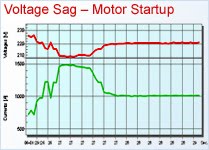News about the blackout may not be the thing that is foreign to us. Often writen in various news media that Indonesia's electricity consumption will be so big a problem if the provision is inconsistent with the requirement. In a revelation that was published in National Daily "KOMPAS" edition of Monday, April 5, 2010, Mr. Iwa Garniwa, Director of Energy Studies, University of Indonesia (PEUI) states that electric energy needs in Indonesia to produce a product proved to be much greater than in developed countries like Japan. While energy consumption per capita of Indonesian society are far less than Japan.
This certainly would be very ironic and shows that people whose land reached by electricity has a spendthrift attitude while other regions that have limited electricity supply constraints. Inevitably, these problems can not be resolved simply by relying on government policy, particularly PLN ( National Power Company ) as the electricity service provider. In this case, we as one of the users of energy are required to immediately change the behaviors that tend to lavish life energy. One concrete step in savings is to use the AC inverter technology.
According to research conducted by the Energy Research Institute, University of Indonesia (UI LPE), AC with inverter technology has a high electrical energy consumption is lower compared with non-AC inverter. Dalam penelitian ini, LPE UI menggunakan HIOKI 3169 – CLAMP ON HiTESTER yang difungsikan sebagai energy analyzer. In this study, LPE UI using HIOKI 3169 - Clamp ON HiTESTER which functioned as an energy analyzer.
By using the HIOKI 3169, we can see how big the savings that can be performed on an AC inverter. HIOKI 3169 has advanced features that proved capable of analyzing the electrical energy needs (power recording, demand values and harmonics measurement) from the burden of one phase to three phase. Technical capability and reliability HIOKI 3169 has gained the trust of the Energy Research Institute, University of Indonesia - LPE UI in support of various energy research is conducted.
(Quote from : Advertorial Kompas, 5 April 2010)

 klik
klik klik
klik








